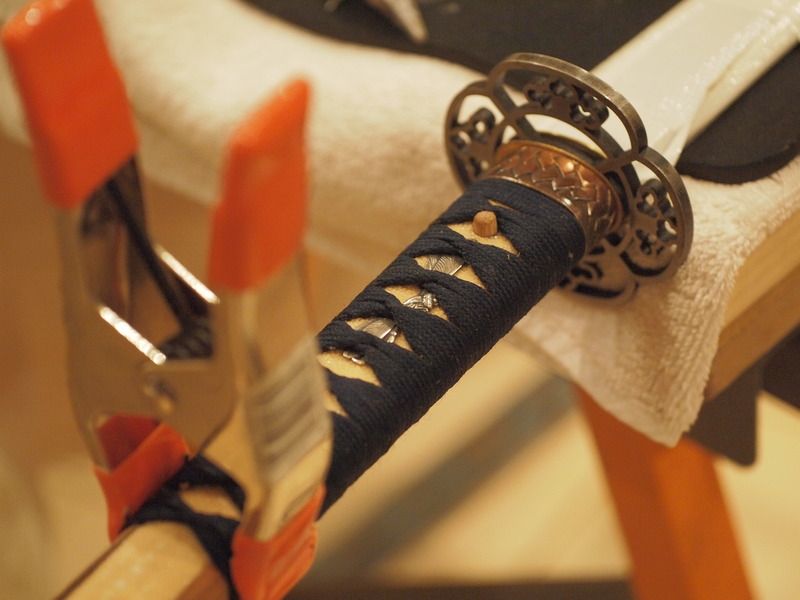I took up iaido a couple of years ago, iaido being the "art of drawing the sword" in other words, a form of Japanese martial art which concentrates on drawing and cutting in smooth and flowing motion to defend against attack.
I also decided it would be nice to make my own swords - albeit from purchased parts which are now readily available on the internet. This includes sword blades which vary from being cheap and nasty to being quite well made (you do get what you pay for). While not up to the standard of the wonderful antique Nihonto (original Japanese blades made in the traditional manner) they are not too bad given their purpose and price. An interesting aside is that sword blades now available include what we would call damascus (layered) steel which has some similarity in appearance at least to the steel originally used by the Japanese (called tamahagene steel) . Also this modern steel is now often traditionally tempered to produce a beautiful wavy temper line or "hamon" back from the blade's edge. The hamon shows where the softer and more springy steel in the back part of the blade becomes the much harder more crystalline steel of the blade's edge.
Building a sword in this manner requires considerable research to get it right and some familiarity with both metal working and woodworking techniques. It also requires learning how to use modern equivalents of traditional Japanese lacquer and how to perform the handle wrapping properly.
Here is the partially complete sword in its recently lacquered saya (i.e. scabbard) with its tsuka (handle) wrapped in samagawa (ray skin) awaiting its final wrapping of ito (silk braid)

Here I am performing the wrapping of the tsuka in silk braid over samagawa. This technique is quite tricky to master as when finished the result must not only look beautiful but also be highly functional which means the braid must be tight and not slip when the sword is used. There are very specific techniques to achieve this.In this sample I am using perhaps the simplest of the various styles of wrap commonly performed in the traditional manner.

Save
aSave
Save
Save
Save
Save






